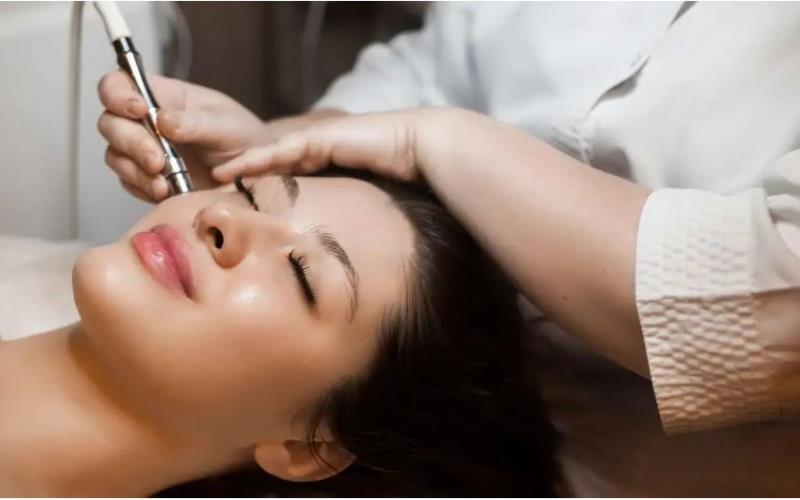Recently trendy skin treatments include microneedling. This procedure stimulates collagen formation and derma renewal by creating micro-injuries with a device covered in tiny needles. Collagen inclusion therapy can address many skin issues, but knowing the dangers and benefits is crucial before starting. This detailed overview explains microneedling therapy, influence on the body and what to expect before and after the operation. We’ll also compare it to alternatives and explore how to find a good practitioner. Whether microneedling therapy is right for you will be clearer after reading this article.
How Microneedling Works
A device withthin needles creates regulated micro-injuries in microneedling therapy . A consensus report in the Journal of Clinical and Aesthetic Dermatology magazine found that micro-injuries boost collagen and elastin production by stimulating the body’s wound-healing response. The result is a more youthful appearance, enhanced epidermis texture and tone, and fewer affinities. Microneedles can also reduce acne scars and hyperpigmentation, according to an International Journal of Women’s Dermatology review. Studies have shown that microneedle therapy efficiently removes a range of dermatic issues.
Advantages of Microneedling
Microneedling has many skin benefits. Since increased collagen and elastin production, skin texture and tone cardinally improve. A Journal of Cutaneous and Aesthetic Surgery study found that injection collagen therapy reduces fine lines and wrinkles, converting it into an effective anti-aging maintenance. A Journal of Cosmetic Dermatology latest review found the complex boosts treatment of acne scars and hyperpigmentation. Because the instrument creates skin microchannels, topical treatments absorb better, the therapy can treat several skin issues.
It became popular due to the minimal invasive effect on the skin. While most methods suppose anesthesia before treatment, the microneedles require only a light poke. However, this equipment requires special doctor’s control according to the US Food and Drug Administration. They rated microneedling devices to class II, but earlier these devices were accessible to everybody as class I.
Microneedling risks and side effects
Microneedling is typically safe, despite dangers and adverse effects. According to the American Journal of Clinical Dermatology, redness, swelling, and mild physical discomfort are common side effects. Unsafe procedures can cause infection and scarring, which are rare. In addition, the American Society for Dermatologic Surgery advises against our topic on anyone with active acne, open wounds, or skin disorders including eczema or psoriasis. To avoid complications, pick a trained doctor and follow aftercare recommendations.
During and After Microneedling
To reduce possible pain, numbing cream is a useful support. Depending on the treatment area size, the procedure takes 30-60 minutes. User reports indicate that the process may cause moderate redness and swelling, which normally last a few days. Please avoid sun exposure and use moderate skincare products during healing. Some people may notice transient skin dryness or flaking. Many users report visible skin texture and tone improvements after weeks of therapy, with continuous improvements over time.
Acne Clinic Tips for Success
Acne Clinic offers these microneedling tips for best results:
Choose an acne-prone skin expert with experience in this branch.
Gentle washing, moisturizing, and sun protection should be done before and after treatment.
Avoid picking or scratching the skin while healing to avoid scarring.
For optimal benefits, microneedling can be used in parallel with chemical peels or topical acne treatments.
The collagen therapy is progressive and may require numerous sessions for best outcomes, so be patient and realistic.
Differences between microneedling and other skin treatments
It’s vital to compare microneedling therapy to other skin treatments available on the market. A Journal of Dermatology and Dermatologic Surgery study indicated that microneedles improved acne scars and fractional laser therapy. Laser therapy is more expensive and takes longer time to recover from than collagen injections. In another Journal of Cosmetic and Laser Therapy study, the injections with platelet-rich plasma (PRP) deleted wrecked hairlines and wrinkles more effectively than the procedure alone. Best therapy depends on skin issues, price, and downtime tolerance. Consultation with a professional can assist in choosing the best method .
Conclusion
Finally, microneedling is safe for acne scars, distinctions, and hyperpigmentation. It enhances skin texture and tone by increasing collagen and elastin generation, giving it a youthful appearance. Choosing a trained practitioner and following aftercare guidelines can reduce risks and adverse effects. Alternative skin treatments cost more and take longer to recover from. This therapy can improve skin appearance when added to a full skincare routine.

